Last spring, Jeanette Cobb, Master Gardener and garden project chair gave us a tour of the William Root House garden. The William Root House is an award-winning museum surrounded by beautiful heirloom gardens in Marietta, Georgia. The museum exhibits illustrate the lives of the Root family as well as their enslaved house servants, who lived and worked on the Root House property before emancipation.
Jeanette walked the garden with us, identified many of the historic plants, and explained their importance and the ways they would have been used in the 19th century. She also described the difference that the Master Gardeners have seen in the health of the garden since they began using Soil³.
Don't miss our video featuring the Historical Root House Garden.
Historical House & Garden
William and Hannah Root moved from Philadelphia and became early settlers of Marietta, Georgia. The Root House was built around 1845 and their gardens were established. Mr. Root was one of Marietta’s earliest merchants and its first apothecary (pharmacist). He created medicines and herbal remedies from plants in his garden, including teas, tinctures, and salves for his own family as well as the citizens of Marietta. He sold these medicines through his pharmacy/mercantile store, located in Marietta Square.
Cobb Landmarks & Historical Society moved the William Root House to a new Marietta location where the house and gardens could be restored.

By 1990, the Root House was in disrepair. The Cobb Landmarks & Historical Society saved it and moved it to a new location on a parking lot at the corner of Polk Street and N. Marietta Parkway, where the house and gardens could be restored. Other buildings were added on the new property, including the cookhouse, the smokehouse, the “necessary house” or privy, and a cabin.
A cookhouse, smokehouse, necessary house (outhouse), and cabin were added behind the main house.

Heirloom & Medicinal Plant Garden
The Root House gardens were reestablished in this new location with truckloads of soil and soil amendments brought in to reconstruct the gardens over the parking lot surrounding the new Root House site. All of the vegetables, herbs, fruit trees, decorative flowers, and blooming shrubs were researched to confirm their availability in Georgia during the 1860s.
As was typical in the mid-19th century, homes like the Root House had distinct garden areas on their property, including an ornamental garden with flowering plants, a garden with culinary and medicinal herbs, and a vegetable garden planted near a cookhouse, where meals were prepared.
Hops vines grow on the porches of the main house and the cookhouse, and the vegetable garden is nearby.

Dedicated Master Gardener Volunteers of Cobb County have managed the Root House garden in its new location since it was reestablished in 1990. They maintain four garden spaces. All of the plants are heirlooms and authentic to the period. These Master Gardeners learn together and teach visitors about these historical plants and the importance of heirloom gardening. They also host a plant sale at the Root House each spring that includes many of the heirloom plants that grow there now.
Cobb County Master Gardeners research, plant, and maintain authentic heirloom plants in the Root House Garden.

Many of the plants grown in the Root House garden today were likely to have been the same plants that were grown and used by Mr. Root to create medicines and herbal remedies, including feverfew, comfrey, costmary, ironweed, and valerian. A comprehensive list of plants and their medicinal and health uses is included on the Root House Plants page.
Even the vegetables are authentic and planted behind the main house, near the cookhouse, in the Root House Garden today. Many are vegetables that we still enjoy, including sweet potatoes, black eyed peas, and collard greens.
The following pictures feature some of the heirloom medicinal plants growing in the garden.
Feverfew is Tanacetum parthenium in the Aster family. It was used to make tea, powders, and liquid extracts and taken internally for fevers, headaches, constipation, and diarrhea.
Feverfew flowers

Ironweed is Vernonia gigantea, native to North America. The leaves were dried for tea to treat female conditions, childbirth pain, and hemorrhaging. Roots were used to treat mouth and stomach-related problems.
Ironweed leaves & flowers

Valerian is scientifically called Valeriana officinalis, and also called garden heliotrope or all-heal. The roots were boiled (decocted) into tea and tinctures to treat sleep disorders (insomnia), anxiety, and nervous disorders. It was also used as a sedative and as a diuretic.
Valerian flowers

Rudbeckia hirta, commonly called black-eyed Susan, they call it Rudbeckia at the Root House garden. It was used to make root tea and juice for headaches and to treat sores, swelling, snake bites, and worms.
Rudbeckia flowers

Evening primrose, Oenothera speciosa, is also called: Mexican evening primrose, pink buttercups, pink ladies, showy evening primrose. Oil from the seeds was used for skin disorders, eczema, psoriasis, and acne. It was also used as a pain killer for women during menstruation, mastodynia, or menopause. Seeds, roots, flowers, and stems of the plants could be used medicinally.
Evening primrose flowers

Soil³: Ideal for Heirloom Gardens
Jeanette's fellow Master Gardener, Dörte Schmieta, brought Soil³ to the Root House Garden for the first time. Dörte explained that a Persian Lilac planted in the garden had not been doing well. She uses Soil³ in her own garden and decided to bring buckets of her own supply to top-dress the Lilac and she began to see the plant improve very quickly. She and the Master Gardeners were thrilled when the Lilac bloomed for the first time that spring.
After top dressing with Soil³, a Persian lilac (Syrina persica) came to life and bloomed for the first time in the Root House Garden.

Jeanette commented that she wished they’d had Soil³ products from the beginning. Now, they regularly use Soil³ compost or Veggie Mix throughout the Root House garden.

Video and photography by Laurie and Simon Wakefield.
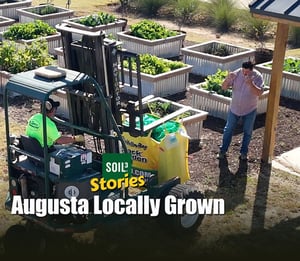
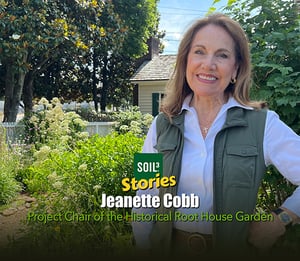



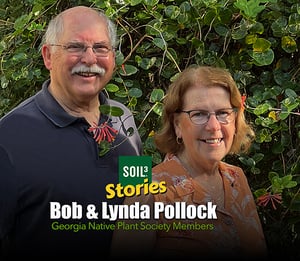
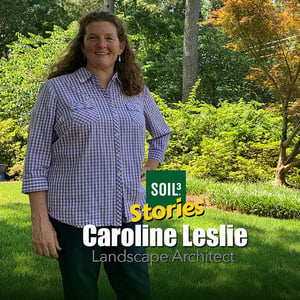

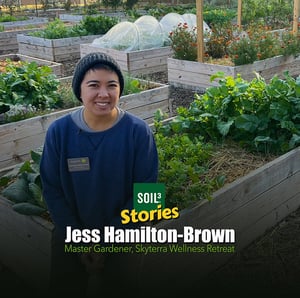
Did this help you out? Have any questions for clarity? Leave a comment below!